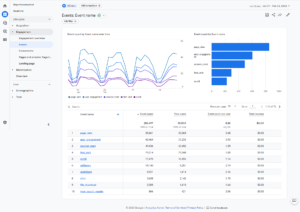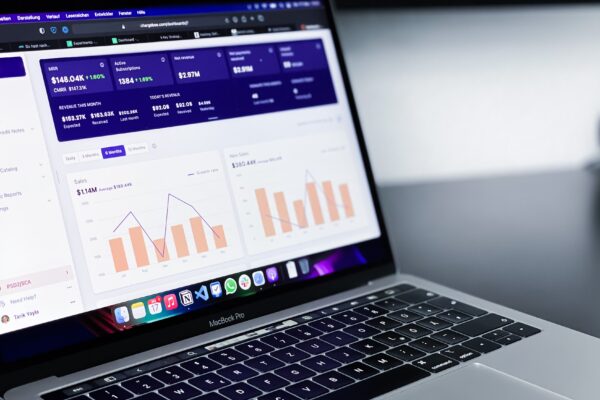Over the past several months I start receiving messages from Google announcing its deprecation of Universal Analytics in favor of Analytics 4 from July 1, 2023 (and Analytics 360 got an additional 3 months beyond that date until October 1, 2023). The new tool, the company claims, has more power to measure many different types of data, providing new analytics capabilities, in particular through machine learning. So let’s find out…

What is Google Analytics 4
This is a new resource looking a little different than Universal Analytics (UA) which is much easier and faster to set up. Google repeatedly calls GA4 the future of analytics, justifying it as being:
- Event-centric scalable cross-platform analytics.
- The new resource featuring ML and NLP functions available to all GA users.
- Privacy-driven platform, eliminating the need of setting cookies to maintain confidentiality
- Seamlessly integrated with all Google products. Yes, YouTube is inclusive!
- Capable of cross-platform identification, exposing the entire user journey as all their actions from various devices.
Being even-centric GA4 processes analytics in the same standardized way across all devices and platforms. This definitely improves the quality of data and provides a consolidated report across the entire user journey. Sounds sweet, so let’s look at these features in more detail.
Machine Learning
One of the main advantages of Google Analytics 4 is machine learning combined with NLP features used for:
- Predicting conversions’ likelihood and creating Google Ads audiences based on these predictions.
- Alerting you on important data trends, such as products with growing demand as the result of increased demand.
- Predict customer churns so you can effectively invest in customer retention well in advance
- Find some other anomalies in reports.
Developers plan to even further enhance features by adding new predictions, such as ARPU marketers could adjust their strategies for increasing ROI by using ML insights.
Privacy becomes the top priority
- GA4 is privacy-driven. For example,
gtag.jslibrary is designed to work without setting cookies. There is an expectation from Google to abandon using ClientID in favor of the internal CRM-generated identifier such as User ID which stays shared cross-platform between devices and browsers. - An IP address is anonymous by default and that cannot be changed.
Seamless integration with Google tools
As I mentioned above, YouTube integration is a killing feature of GA4 and developers are actively working on improving the quality of scoring YouTube campaigns (such as view-through conversions). This enables one to address the questions:
- How does YouTube campaign influence engagement metrics?
- How does it affect the bounce rate?
- Any other (than conversions) site events?
With deeper Google Ads integration, you can set the audiences and run campaigns for bringing more relevant customers, regardless of the device they use.
Previously with Universal Analytics, BigQuery Export was only available to paid users, while GA4 features if free of charge for everyone.
Cross-Platform User Identification
Google Analytics 4 counts actual users interacting with your business, not the session-based devices or browsers, as it was previously. It relies on 3 levels of identification:
- user_id
- device_id
- Google Signals
With event-based analytics, you can more accurately track user journeys, starting from the first touch to the repeating conversions. What is important here, when the user performs the same event on different devices, this data merges into a single event. For example, putting an item in the cart on both a laptop and a smartphone would count as a single “Add to Cart” event.

Google Analytics 4 vs Universal Analytics
Let’s start by comparing the key tracking concepts of GA4:
- Analytics gets built around events rather than sessions. Sessions are artificial concepts, therefore Google moves away from them. Nevertheless, would you have the actual need for session data, you can generate it from the raw data in BigQuery.
- There are end-to-end data collection settings for the entire site and those that change with each event.
- UserID is the first-class citizen in GA4 so you don’t need to create an end-to-end view, as these are OOB.
There are 3 types of events in GA4:
- Automatically collected: such as
pageview,sessionstart,viewsearchresults,scroll,file_download. - Recommended: grouped by some business area, like Retail & Ecommerce, Travel, or Gaming.
- Custom: all other events that you would like to implement and track – are subject to the event collection limits.
You have to implement recommended and custom events yourself. Each event can have Custom Dimensions parameters which are end-to-end for most reports.
Google Analytics 4 does not feature concepts of category, action, and event labels. Custom dimensions and metrics must be explicitly set up.
Page views become a pageview event. As I said above, it is collected automatically as soon as you implemented config function of gtag.js. You may read more about it at this link.
Pageview event operates following pre-defined parameters:
page_locationpage_pathpage_titlepage_referrer
Counting session in Google Analytics 4
GA4 still has sessions in reports, but they are counted differently than it was in Universal Analytics:
- The session is automatically initiated by
session_startevent. - The session duration is the interval between the first and last events.
- Interactions get automatically recognized (meaning you don’t need to send an interaction event).
- Late hit events are processed up to 72 hours late (compared to 4 hours in UA Properties).
- Currently, GA4 does not allow configuring session duration.
If you count and compare sessions in a GA4 report and Universal Analytics, you may find fewer sessions in GA 4. That occurs because the hits sent after the session end can be later assigned to the correct session within 72 hours. That also means that session reports will take longer to generate.
New Feature: User Properties
GA4 brings a new feature – User Properties, the attributes describing groups of your user base, such as their language preferences or geolocation, gender, city, new or returning customer attribute, etc. You can define any custom properties for segmenting your audience for personalizing the ads.
Should I hurry up switching to GA4?
If you actively use YouTube Ads and User-ID based remarketing, consider switching to GA4 straight away. The same applies to active Firebase users and those familiar with its data collection logic, as well as exporting tables in BigQuery.
The sooner you move to GA 4, the sooner you start collecting historical data, the more information you have for decision-making, and the sooner you benefit from ML insights. As I mentioned above, the data structure and logic of collections in GA 4 and Universal Analytics significantly differ. Therefore, it will be problematic to combine the data from both resources.
Concerns
There is no reporting API, so one has to use BigQuery. If your team has not yet worked with raw data in BigQuery, and is not familiar with the principles of Firebase it may take some time. Also, export conversions and integration with other Google products are not yet fully functional.
Upgrading to Google Analytics 4
I’d suggest using both versions of GA assets for a while. In order to do so:
- Create and configure a GA 4 resource.
- Add the tracking code (manually or through GTM which is faster and easier).
- Consider what events and parameters you want to collect in the new resource type.
- Use two resource types at the same time to compare how data is collected.
Summary
- This is the most dramatic update of the GA logic: now everything is built around events, event parameters, and users rather than sessions as before.
- Cross-platform analytics between the site and applications OOB is one of the key features of GA4.
- To set up a new GA4 resource, you can use configured GA via
gtag.jsor using GTM. - Google recommends launching the new Google Analytics 4 in parallel to collect data into it, using standard GA as the source of historical data.
- There are shortcomings in the new GA4 with not all features available so far, but developers are rolling them out gradually.
- You can configure free data batching from GA4 to BigQuery.
- The earlier you set up GA4, the more historical data will get collected.
Hope you find this helpful!
